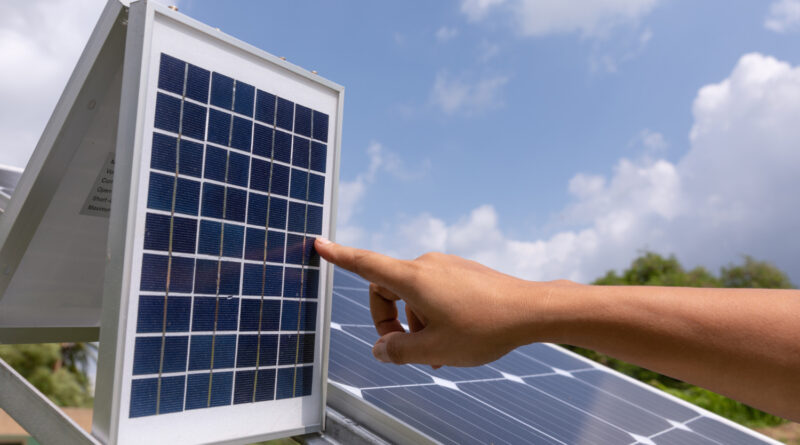Top 10 trends in smart photovoltaics by 2025
According to Huawei experts , renewable energy sources (RES) will become the world’s most important energy source in the next 5-10 years. This is particularly true for photovoltaic power plants (PVEs), which have a bright future. However, despite the growing share of renewable energy in total energy production, safety, reliability and cost-effectiveness must be given the highest priority.
The future development of photovoltaics by 2025 will be shaped by 10 major technical trends, which include the following four dimensions:
- Lower total cost of solar energy production (LCOE),
- Grid compatibility,
- Smart convergence,
- Safety/reliability.
Trend 1: Digitisation – More than 90% of all PV installations worldwide will be digitised
Despite the dynamic development of the global PV market, there are still a number of devices in today’s PV installations such as power generation or communications that are not so smart. These devices cannot be effectively monitored or may provide false malfunction signals. Thanks to the rapid development of digital technologies such as 5G and the cloud, more than 90% of all PVs are expected to be fully digitised by 2025. This will allow PV plants to be simple, intelligent and gain effective tools for their management.
Trend 2: Smart upgrades using artificial intelligence – Over 70% of all PV will use artificial intelligence (AI) tools
Deep integration of AI and PV will facilitate inter-sensing and interconnection between devices, allowing for improved energy production and O&M (operation and maintenance) efficiency through collaborative optimisation. AI techniques can offer promising new technologies for PV, including: proactive identification and protection of PV modules and equipment failures by AI diagnostic algorithms; optimization of the tracker algorithm thanks to the large volume of data as well as the ability to ‘self-learn’ for higher yields; and synergies of solar energy storage using AI for automatic optimization of battery yields as part of PV. As the total cost of solar production (LCOE) decreases and the complexity of O&M increases, AI-based techniques are likely to be widely used in PV.
Trend 3: Operation and service of PV plants without operators – More than 80% of all PV activities will be unmanned
The development of AI and the Internet of Things (IoT) will create new intelligent products and services that will bring greater O&M convenience to PV. Through integrated expertise and continuous ‘self-learning’, AI will be widely applied, replacing O&M experts in many diagnostic and decision-making functions. PV inspection by drones and automated robot-based O&M activities will handle hazardous and repetitive O&M activities. These activities, which require a continuously high level of accuracy, will contribute to increased productivity and safety in the PV. Therefore, it is expected that in the future most of the O&M activities of PV will be fully automated, without the need for human intervention.
Trend 4: Proactive support of distribution networks – PV will change from equipment that adapts to the distribution network to equipment that supports the operation of the distribution network
The increasing penetration of RES will have increasing impacts on the operation of distribution networks, limiting the expansion of other PV. Over the next five years, PV must gradually change from grid-adaptive to distribution-supported equipment. To this end, PVs should have capabilities such as SCR, harmonic current compatibility up to 1%, voltage control and frequency regulation, which are necessary for network connection.
Trend 5: Combination of PV and storage – The share of PV combined with energy storage systems will exceed 30%
Due to the ever-increasing share of RES, distribution system operators will increase the requirements for frequency regulation and peak energy balancing. In recent years, the cost of battery energy storage systems has fallen significantly due to technological progress. In this context, it is anticipated that PV will increasingly be connected to energy storage systems. It is estimated that by 2025 more than 30% of PVs will be equipped with energy storage systems.
Trend 6: Virtual power plants – Over 80% of residential PVs will be connected and networked with virtual power plants
Over the next 5 years, ICT technologies such as 5G, blockchain and cloud services will be widely used in distributed power plants. This will create virtual power plants that allow for shared management as well as participation in planning, transactions and ancillary services for energy systems. The development of technologies for virtual power plants will inspire the emergence of new business models and attract the entry of new players into the distributed photovoltaics segment, thereby enabling the further development of distributed photovoltaics.
Trend 7: Active safety – The electric arc switch (AFCI) will become a standard element for distributed PV roof systems and will be part of international industry standards
The development of distributed photovoltaics will make building and human safety a major focus. The risk of electric arc formation due to poor node contact in PV modules, poorly attached PV connectors or due to ageing or cable breaks will become an urgent issue for the PV industry. In order to mitigate these risks, AFCI will become a standard feature for distributed PV roof systems and will be incorporated into international industry standards.
Trend 8: High energy density – The energy density of the inverters will increase by more than 50%
As the total cost of solar generation decreases, the demand for higher rated power per module and also for easy maintenance of the PV inverters increases. A higher energy density is required to achieve this. Thanks to breakthroughs in the field of research on SiC and GaN-based broadband semiconductors, as well as advanced control algorithms, the power density of the inverter is expected to increase by more than 50% over the next 5 years.
Trend 9: Modular design – Major components such as inverters, computers and energy storage systems will have a modular design
With the increasing power and complexity of PV systems, the traditional, expert-oriented approach to on-site maintenance becomes too expensive. Modular design will become standard because it allows flexible deployment, rapid expansion and maintenance without the need for on-site experts. This will significantly reduce operating and maintenance costs and also improve the availability of the entire system.
Trend 10: Security and reliability – Security and reliability will become an essential requirement for PV systems
The growth in the total installed capacity of PV systems worldwide and the increased complexity of the network architecture increase the security risks of PV. In addition, there are stricter privacy and security requirements for users of distributed PV systems. All of these trends suggest that PV needs to have security and trust capabilities in terms of reliability, availability, protection, security, flexibility and privacy.

